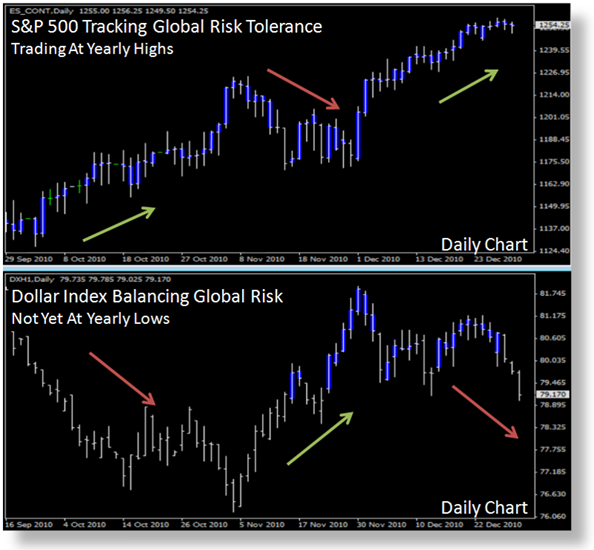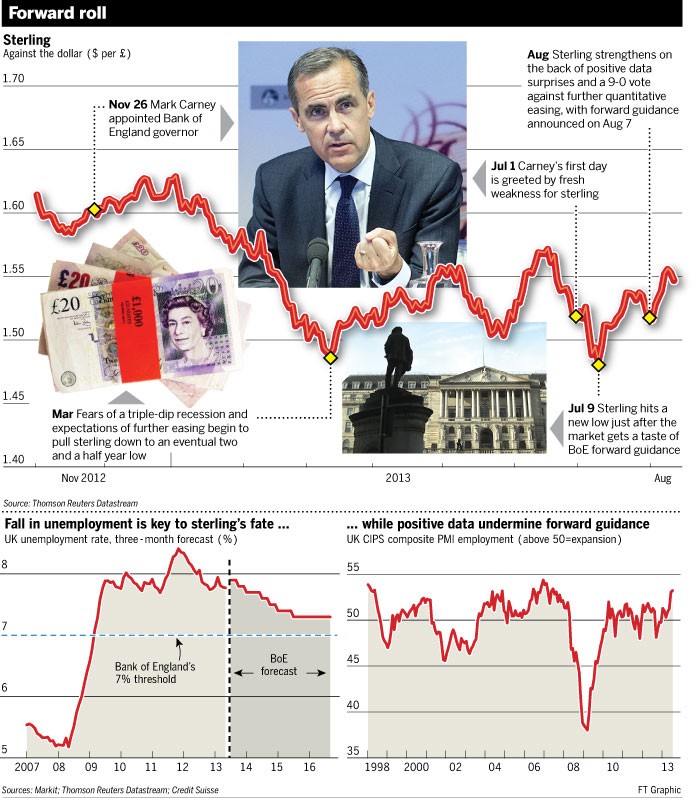Forex Dollar and Equity Quiet Unlikely to Last
Post on: 5 Май, 2015 No Comment

Talking Points:
- Dollar and Equity Quiet Unlikely to Last Japanese Yen Advances on Building Risk Aversion Trend British Pound Ready for Another Monetary Policy Volatility Spike
Dollar and Equity Quiet Unlikely to Last
The volatility measures paint the picture well for the dollar, broader FX landscape and general capital markets. Conditions are quiet. Too quiet. Though we are modestly higher than the six-year low set earlier this year; the benchmark VIX Volatility Index for the US equity market is hovering around 14 percent extending a steady trend of complacency and leveraged risk-taking. This indicator is a perfect complement to the benchmark equity index that it represents (the S&P 500 ) and thereby paints the picture of speculative positioning. The equity index represents the market return the rate which investment managers must beat to justify their fees. However, stocks are reinforced by the expectation that any significant correction will be met by a central bank intervention that puts it back on track. In turn, we have seen only modest corrections since the climb began back in 2009. Beating such a consistent measure (generating alpha) means having to dip into exceptionally risk positions for more vigor and using leverage to amplify returns in a exceptionally low yield market. This sets up explosive market conditions.
When we look at the dollars overall positioning against a backdrop of such wanton risk, its performance is rather impressive. For a reserve currency, it is performing quite well in the scramble for leveraged returns. Yet, that quiet strength may not turn into a full-blown structural headwind for some time. While the greenback is well positioned for a disorderly though likely short-lived deleveraging effort, an active catalyst is needed to turn the virtuous cycle of speculative ramp into a vicious cycle of panicked selling. The FOMCs policy decision this past week was one of the most obvious high-profile triggers, but it was defused by the no Taper outcome. Is there a comparably important and obvious catalyst we can now turn to focus market participants fears? While a self-realized sentiment shift ( technical traders would call this a cascading stop run ) would be the most enduring driver, there is a growing threat from the standoff in Washington.
If Congress does not put together a budget that the US President will sign off on by the end of this month and/or raise the debt limit soon after, the government will run out of funds and be forced to suspend some of its facilities. The consensus has been that there would not be a brinkmanship situation like we witnessed at the beginning of this year, there seems to be little progress and the clock keeps ticking. There is enough concern that rating agency Moodys has warned that a government shutdown could undermine the United States Aaa credit rating. Heavy markets moves are derived from the unexpected and/or structurally-important developments. If this metastasizes, it will be both.
Japanese Yen Advances on Building Risk Aversion Trend
The yen crosses were universally lower through Tuesdays close. While the Japanese currency generated gains of less than 0.4 percent against most of its liquid pairings, the consistency speaks to the fundamental theme lacking for amplitude though it may be. A more dramatic tumble from the yen crosses would best be served by a concerted risk aversion move reflected in a selloff of global equities not just the Dow Jones Industrial Averages 4-day drop to reverse its post-FOMC rally. In the meantime, global yields have retreated in the No Taper fallout which in turn curbs the recent carry trade build. As for local fundamentals, discussion of the impending tax hike adds some bearish pressure.
Euro Investors Unfazed by Renewed Budget Concerns
A number of Eurozone members have updated their budgets over the opening 48 hours of the trading week, and the numbers are uneven. Portugal reported its deficit is larger than the target (reinforcing the S&Ps credit watch shift the day before), Spains deficit through August grew, and Greek officials are suggesting they will reach a primary surplus on their current negotiated path. Yet, the benchmark bond yields of all three countries have shrunk. We need to look to more sweeping concerns: scaled up risk trends or rising short-term rates that trigger stimulus.
British Pound Ready for Another Monetary Policy Volatility Spike

Both the sterling and the benchmark 10-year government bond (Gilt) yields have climbed over the past two months. These moves were based on a common fundamental driver: an improved rate outlook for the UK economy. The market has responded to the BoEs rejection of QE and more balanced view of the economy as reason to reverse a stimulus discount. However, in that shift, we have seen the market go further than just a rebalance to neutral. Monetary policy officials have lamented that the markets seem to be pricing in rate hikes well before the central banks forward guidance vow of 2016. Todays Financial Policy Committee meeting statement wont likely take up the speculative fight.
Australian Dollar Will Topple if Bond Yields Drop Below 3.80
This morning, the RBA released its Financial Stability report. The tone of the statement was conspicuously more restrained in its optimism, but it was not an outright warning. More interesting was the auction of A$800 million in 3-year, 4.75 percent bonds. This auction is regular and not on a longer maturity, but it reflects a more important factor for this carry trade. Global investors direct their funds to Australia for yield. The demand for this auction was notably lower. If the 10-year yield on the secondary market drops below 3.8 percent, this carry trade will take a hit.
Emerging Markets Slowly Retreating from Last Weeks Confidence Swell
Since a round of stability measures were introduced and the Fed curbed Taper fears, we have seen volatility in the emerging market (and their exchange rates) cool. However, the situation is far from robust. Looking at the MSCI Emerging Market ETF, interest in the capital markets continues to retreat on fading volume. Meanwhile the Indian Rupee is down 0.8 percent, the Turkish Lira 1.0 percent and Indonesian Rupiah has plunged 3.8 percent this week. If a genuine risk aversion sentiment swept the market, this would be much worse.
Gold Losing Momentum or Building Breakout Pressure Above $1,300?
Gold was virtually unchanged for a second day through Tuesdays close. Stability is an encouraging thing for a commodity struck by significant volatility this past week, but it is of the uneasy variety. Holding above $1,300, the risk of a further drop is palpable. The most influential catalyst for a breakdown would be a sincere advance from the US dollar the benchmark currency the metal attempts to mirror. As it happens, the greenbacks most tantalizing spark would be wholesale risk aversion an interesting situation for a commodity often considered a safe haven. Meanwhile, the 10-day or two-week actual (historical) volatility reading for gold futures is at a two month high.
**For a full list of upcoming event risk and past releases, go to www.dailyfx.com/calendar














